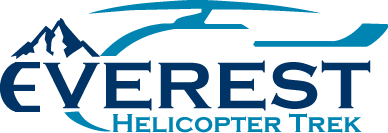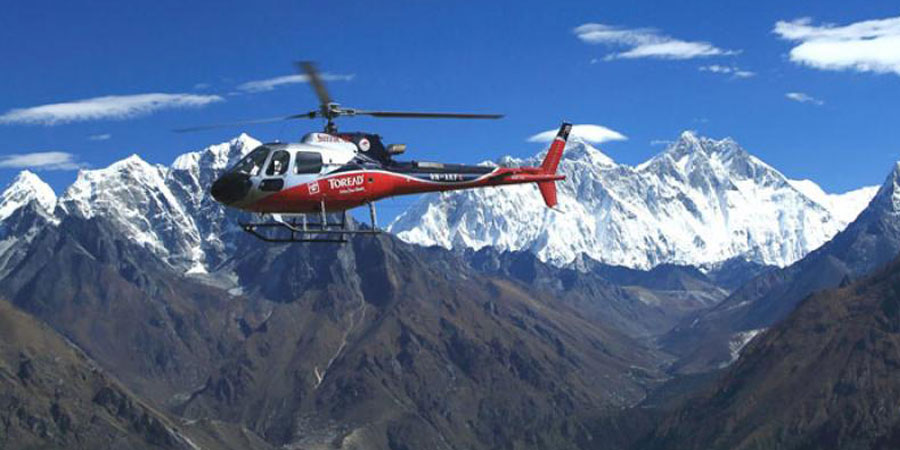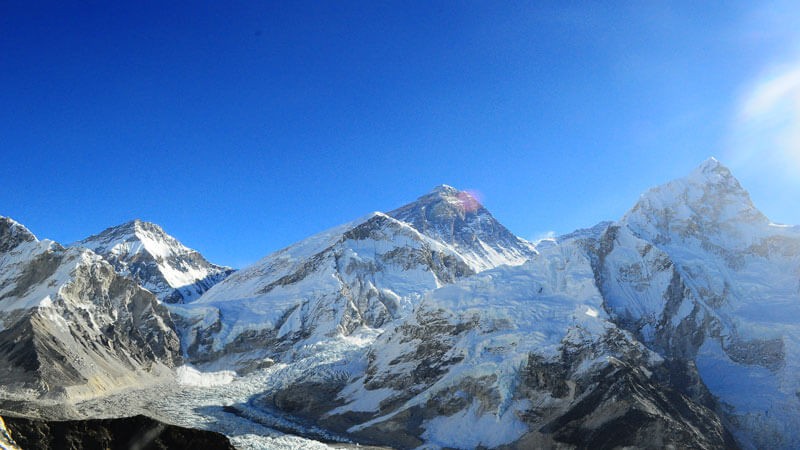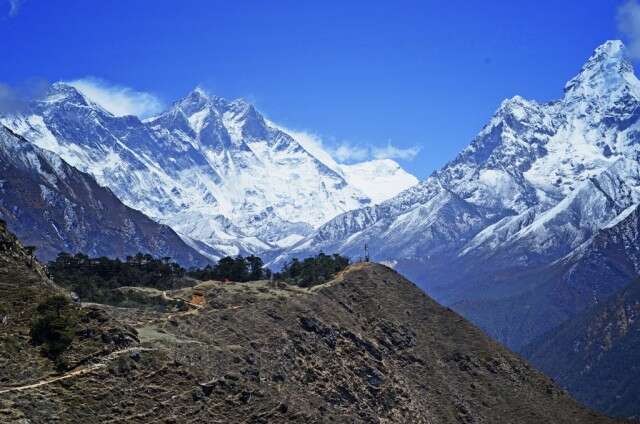Overview
Everest Base Camp Heli Trek is a popular adventure in Nepal that allows travelers to experience the beauty and majesty of the Himalayas while also enjoying the convenience of a helicopter ride. This trek typically starts and ends in Kathmandu, the capital city of Nepal.
The trek begins with a short flight from Kathmandu to Lukla, a small town located in the Solu-Khumbu region of Nepal. From Lukla, travelers will begin their trek to Everest Base Camp, which is located at an altitude of about 5,364 meters (17,598 feet) above sea level.
The trek to base camp typically takes about 7-8 days, depending on the pace of the group. Along the way, trekkers will have the opportunity to experience the local culture, visit ancient monasteries, and enjoy the stunning mountain scenery.
Once trekkers reach Everest Base Camp, they will have the opportunity to visit the base camp itself, as well as the nearby Khumbu Glacier and the Khumbu Icefall. From there, travelers will begin their return journey, either by helicopter or on foot, depending on the itinerary. The trek typically ends with a return flight to Kathmandu.
Overall, the Everest Base Camp Heli Trek is a unique and memorable adventure that combines the thrill of trekking in the Himalayas with the convenience of a helicopter ride. It is an excellent way to experience the beauty and culture of Nepal while also enjoying the comfort of modern amenities.
Best Seasons for Everest Base Camp Heli Trek Return to KTM
The best seasons for a short Everest Base Camp heli trek return to Kathmandu (KTM) depend on your preferences and the type of experience you are looking for. Here are some things to consider when planning your trip:
Weather: The weather in the Everest region can vary significantly depending on the season. The best time to visit is typically considered to be from September to November, when the weather is clear and dry, with daytime temperatures ranging from 15-20°C (59-68°F). This is also the busiest time of year for trekking, so it may be more crowded on the trails.
Snow and Ice conditions: If you are planning to do a short trek that involves some hiking, you may want to avoid the winter months (December to February) when the trails can be covered in snow and ice.
Temperature: The temperature in the Everest region can drop significantly at night, especially at higher elevations. If you are sensitive to cold temperatures, you may want to avoid visiting during the winter months when the temperature can drop below freezing.
Monsoon season: The monsoon season in Nepal typically runs from June to September, and it can bring heavy rainfall and cloudy skies to the Everest region. If you want to avoid the rain, you may want to avoid visiting during this time.
Overall, the best time to visit the Everest region will depend on your personal preferences and the type of experience you are looking for. If you want to enjoy clear skies and warmer temperatures, September to November is a good time to visit. If you want to avoid the crowds, you may want to visit during the shoulder seasons (April to May or December to February).
Permits and Guides
To complete the short Everest Base Camp heli trek and return to Kathmandu, you will need the following permits and guides:
Trekking Permit: You will need to obtain a trekking permit from the Nepal Tourism Board in order to trek in the Everest region. This permit is mandatory and must be obtained before you start your trek.
TIMS Card: A Trekker’s Information Management System (TIMS) card is also required for all trekkers in Nepal. This card is used to track the movements of trekkers in the region and helps to ensure their safety.
Guide: It is recommended to hire a local guide for your trek, as they will be able to provide valuable information about the region and its culture, as well as help you navigate the trails and ensure your safety.
Porter: If you are planning to hire a porter to carry your gear, you will need to obtain a permit for them as well. This permit should be obtained through your guide or trekking agency.
Helicopter Permit: If you are planning to fly to and from the Everest Base Camp by helicopter, you will need to obtain a helicopter permit from the Civil Aviation Authority of Nepal. This permit must be obtained before you start your trek and will need to be presented to the helicopter company at the time of your flight.
Equipments to bring during the Trek
Backpack: A backpack with a capacity of at least 50 liters is recommended for this trek, as you will need to carry all of your personal belongings and gear with you. Make sure to choose a backpack with good ventilation and comfortable straps to prevent any discomfort or injury during the trek.
Sleeping bag: A good quality sleeping bag is essential for this trek, as you will be sleeping in lodges or tents along the way. Make sure to choose a sleeping bag that is rated for cold temperatures and is suitable for the season you will be trekking in.
Warm clothing: It is important to dress in layers while trekking in the Himalayas, as the weather can change quickly and dramatically. Make sure to bring warm clothing such as fleece jackets, thermal tops and bottoms, and a down jacket or parka for colder temperatures.
Trekking boots: A good pair of trekking boots is essential for this trek, as you will be walking on uneven terrain and in potentially wet or muddy conditions. Make sure to choose a pair of boots that are waterproof, comfortable, and offer good support to prevent any foot injuries.
Headlamp: A headlamp is essential for this trek, as you may need to navigate in low light conditions or in the early morning or late evening. Make sure to bring extra batteries and a backup headlamp in case of any issues.
Water bottle: It is important to stay hydrated while trekking, so make sure to bring a good quality water bottle that can hold at least 1 liter of water. A water filter or purification tablets may also be necessary, depending on the availability of clean water along the trek.
First aid kit: It is a good idea to bring a basic first aid kit with you on this trek, including bandages, adhesive tape, pain relievers, and any other necessary medications. Make sure to bring enough supplies for the duration of the trek.
Sun protection: Make sure to bring sunscreen, a hat, and sunglasses to protect yourself from the strong sun at high altitudes.
Trekking poles: Trekking poles can be helpful in providing extra support and balance while trekking, especially on steep or uneven terrain. Make sure to choose a pair of poles that are sturdy and comfortable to use.
Major Highlights of Everest Base Camp Heli Trek Return to KTM
- Flight to Lukla: The short Everest Base Camp heli trek begins with a thrilling flight from Kathmandu to Lukla, which offers breathtaking views of the Himalayas and the lush green landscape below.
- Hike to Namche Bazaar: From Lukla, you will embark on a hike through the beautiful Sagarmatha National Park, taking in the stunning natural surroundings as you make your way to Namche Bazaar, the gateway to the Everest region.
- Visit to Tengboche Monastery: Along the way, you will have the opportunity to visit the Tengboche Monastery, a beautiful Tibetan Buddhist monastery that sits at the confluence of the Dudh Kosi and Imja Khola rivers.
- Scenic Flight to Everest Base Camp: After reaching Namche Bazaar, you will board a helicopter for a scenic flight to the base of Mount Everest, where you will be treated to stunning views of the highest mountain in the world.
- Return to Kathmandu: After exploring the base camp and taking in the breathtaking scenery, you will return to Kathmandu by helicopter, completing your short Everest Base Camp heli trek.




